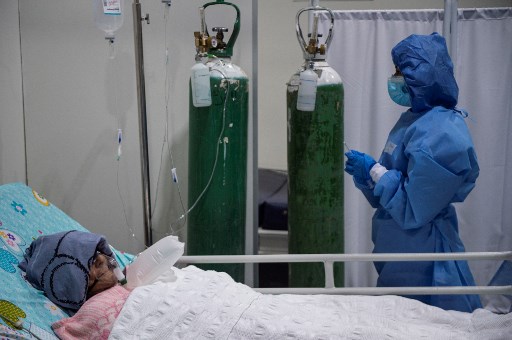

by Olivier THIBAULT
Agence France Presse
The global death toll from Covid-19, which is set to pass five million, is already far worse than most other viral epidemics of the 20th and 21st centuries.
But there have been notable exceptions. The post-World War I Spanish Flu wiped out more than 50 million people in 1918-19, according to some estimates.


That is far more than the coronavirus pandemic, even if — as the World Health Organization says — Covid’s true toll is two to three times higher than official figures suggest.
Here are some comparisons:
– 21st century epidemics –
The human toll of Covid-19, officially known as SARS-CoV-2, far outstrips that of other viral epidemics in the 21st century.
In 2009, the H1N1 virus, or swine flu, caused a pandemic and left an official death toll of 18,500.
The toll was later revised upwards by The Lancet medical journal to between 151,700 and 575,400.
In 2002-2003, Covid’s predecessor SARS (Severe Acute Respiratory Syndrome) which emerged from China was the first coronavirus to spark global fears, but killed just 774 people.
– Flu epidemics –
The Covid-19 toll has often been compared to that of seasonal flu, which, without hitting the headlines, accounts for between 290,000 and 650,000 deaths worldwide every year out of around five million serious cases, according to the WHO.
In the 20th century, two major non-seasonal flu pandemics — Asian flu in 1957-1958 and Hong Kong flu in 1968-1970 — each killed around one million people, according to counts carried out afterwards.
The greatest catastrophe of modern pandemics to date, the Spanish Flu pandemic of 1918-1919 was also caused by a new virus.
In three successive waves it wiped out 50 million to 100 million people, according to research published in the 2000s. The toll is much higher than the 10 million who died in World War I.
– Tropical viruses –
The death toll from Covid-19 is far higher than that of the deadly haemorrhagic fever Ebola, which was first identified in 1976.
The last major outbreak of Ebola killed nearly 2,300 people in the Democratic Republic of Congo between August 2018 and June 2020.
In four decades, periodic Ebola outbreaks have killed some 15,300 people, all in Africa.
Ebola has a far higher fatality rate than Covid-19: around 50 percent of people who are infected die from it.
But Ebola is less contagious than other viral diseases, largely because it is not airborne but transmitted through direct and close contact.
Other tropical viruses like Dengue fever, whose severe form can be fatal, cause a lower death toll.
Dengue, which is passed on by mosquitos, has been on the rise for the past two decades but kills only a few thousand people every year — 4,032 in 2015, according to the latest WHO figure available.
– AIDS and hepatitis –
AIDS is by far the most deadly modern epidemic: since 1980 almost 36.3 million people around the world have died of the disease, which affects the immune system and cannot be cured.
No effective vaccine has been found, but retroviral drugs, when taken regularly, efficiently stop the illness in its tracks and heavily reduce the risk of contamination.
This treatment has helped bring down the death toll from its peak in 2004 of 1.7 million deaths to 680,000 in 2020, according to UNAIDS.
The hepatitis B and C viruses, mainly transmitted by blood, also have a high death toll, killing more than one million people every year, most often in poor countries.
© Agence France-Presse
